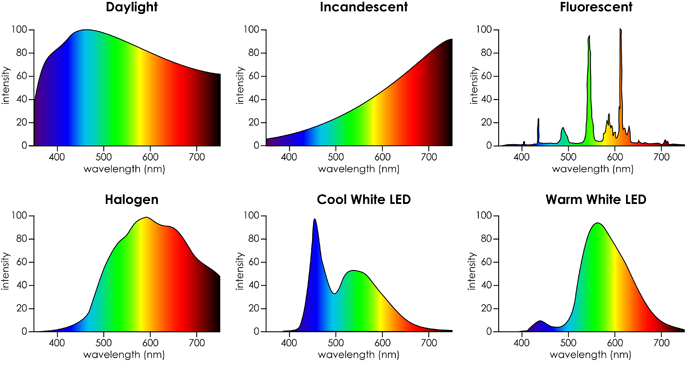Another Acetone test, on the left is KWK Borogu (known noble) then Lami Kava, then Kava Time. On the far right is KBR Tudei. As always it's tough to get accurate photos but I'm not worried about either of these. Both Kava Time and Lami look good and are actually a little lighter to the eye.
View attachment 6959
View attachment 6960
Props for using natural sunlight in the photographs. The reason that is good is that the absorption peak is around 400 nanometers, which is well covered by natural sunlight, but not so much by incandescent or fluorescent lights. This picture compares the spectral distribution of daylight, incandescent tungsten lights, and fluorescent lights:
Notice that daylight is the most uniform, and also has the greatest intensity at 400 nm, which is very important for accurately seeing the color of acetone tests. The incandescent light is much less intense at 400 nm relative to the rest of the spectrum; in fact the peak of an incandescent bulb is in the infrared (this is because the
color temperature of a hot tungsten filament is about 2400 K; it is much cooler that the Sun, which has a peak in the blue-green, and a color temperature of 6500 K). Also, you can see from the picture above that fluorescent lighting has distinct peaks, with very little intensity around 400 nm, so fluorescent lighting would be complete unsuitable for looking at or photographing acetone tests.
An electronic flash lamp has a color temperature of 5500-6000 K, so that might help, but it is best to photograph acetone tests outdoors on a sunny day (or using sunlight through a window like you did) if possible.
As far as background, I think the white background is better, because otherwise the background colors are not uniform, which can distort the appearance of a photograph.

